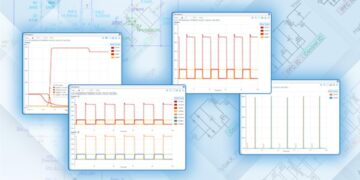
My wife makes meticulous grocery shopping lists for us every week and we go to the store each weekend to restock the fridge and pantry. We know exactly what we need when mapping out each week and it causes us to spend less time wandering the aisles in the grocery store. Likewise, before you create a shopping list for your electronic components you need to carefully define your design requirements and think about the components needed to make those requirements a reality.
If you make a plan and stick to it when designing your electronics, you can cut down your own design time and produce a better product. Many devices might be built around a specialty SoC, FPGA, or other required components, but you shouldn’t start looking at any other parts for your system until all functionality is defined. Once you’re ready to start shopping for components, the right electronic parts search engine makes component selection in electronic system design easy.
It Starts with Requirements Gathering
It may sound obvious, but you need to select components that provide the functionality you need. You’d be surprised how many hardware and software projects have been delayed or have failed because the design team did not thoroughly gather and define their exact requirements before building the product. This causes some functionality to be overlooked, designed incorrectly, or fail completely.
The “requirements gathering” process is all about rigorously defining the electrical behavior required to produce the desired user experience. During requirements gathering, you need to determine your electrical requirements in several areas. Some important areas of functionality are listed in the table below. All these areas are interrelated and it is impossible to consider these in isolation.
| Requirement Area | Design Considerations |
| Power requirements | Number of different supply voltage levels needs to be determined to support different functional blocks. Total current and marginal current in each block need to be calculated. |
| Mounting style | Through-hole mounting is a better choice in mechanically stressful environments, surface-mount gives smaller profiles. |
| Form factor | Form factor will influence your layout and which types of component packages are best for your board. |
| Signalling standards in PLDs | Many PLDs operate with multiple signalling standards, such as LVDS, UART, SPI, or other high speed interfaces. |
| Peripherals | Your peripherals need to be chosen to pair up with your PLDs, and vice versa. |
| Supporting ICs and passives | Other ICs and passives fill in all the gaps in your design. |
| Communication (wired or wireless) | Off-board communication protocols need to be selected. This will influence how you layout your board and which other supporting components you need for your design. |
Many systems are designed around one central component that provides the majority of required functionality. Examples include an FPGA, specialty SoC, MCU, or other module. Areas like peripheral selection, communication, and choice of signalling standard would be constrained by the available interfaces on the peripherals themselves. The same constraints on signalling standards might be imposed when your board is part of a larger system (e.g., part of a rack system with a backplane).
In other cases, you might be constrained with respect to power consumption. An example would be in IoT/mobile devices that need to run for long periods on battery power. Other power electronics systems need to output high power with low harmonic content to comply with EN, IEC, or UL standards. You would need to carefully select a range of components for power management to ensure you output stable power throughout your system.
How a Search Engine Aids Component Selection in Electronic System Design
The other aspect of component selection is sourcing, especially in the face of shortages and supply chain volatility. You shouldn’t include a component in your design if you can’t source it at the scale you need or if it takes months to be delivered. A search engine should give you access to sourcing information alongside complete component descriptions and specifications. Even better is when you can get CAD models from component search engines. You won’t have to create components from datasheets or search through multiple distributor/manufacturer websites when your components search engine provides verified CAD models for components.
With the right electronic parts search engine, you can quickly access the following information as part of component selection in electronic system design:
- Specifications: Supply voltage, power consumption/output, signalling standards, bit depth for digital components, and other specs can be seen in the component description.
- Datasheets: There’s no reason to try and search datasheet repositories or manufacturer websites; datasheets should be quickly accessible within search results.
- Sourcing data: Component stocks, prices, lead times, and distributor information should be aggregated in one place.
- 2D and 3D CAD models: Schematic symbols, PCB footprints, and 3D models should be available in vendor-specific and vendor-neutral formats.
Not all search engines provide this data in a single location. If you can access technical specs and sourcing data in a single search engine, you can quickly qualify components and start working with them in your new design.

The parts search features in Ultra Librarian allow you to search by keyword, application, or specification. You can easily filter down to a short list of candidate parts and access CAD models for your new board. All component models can be imported into popular ECAD applications, and you’ll have access to sourcing information from worldwide distributors.
Who wants to spend time using multiple distributor websites for component selection in electronic system design? Ultra Librarian helps by compiling all your sourcing and CAD information in one place. Working with Ultra Librarian sets up your team for success to ensure any design is going through production and validation with accurate models and footprints to work from. Register today for free!








